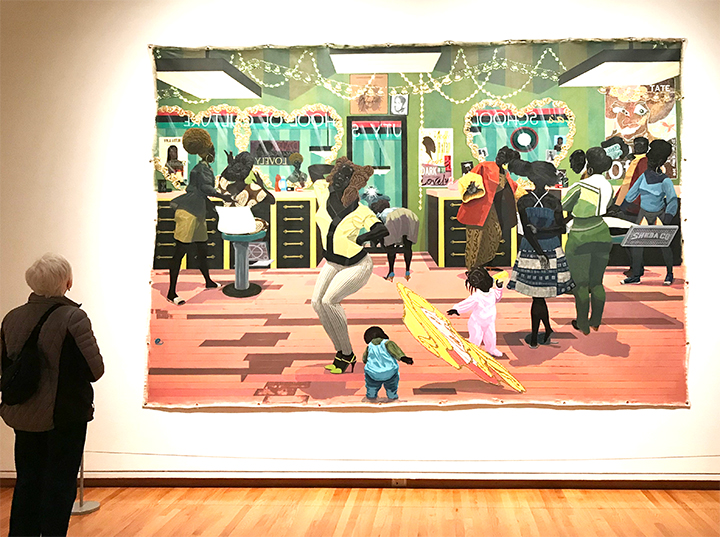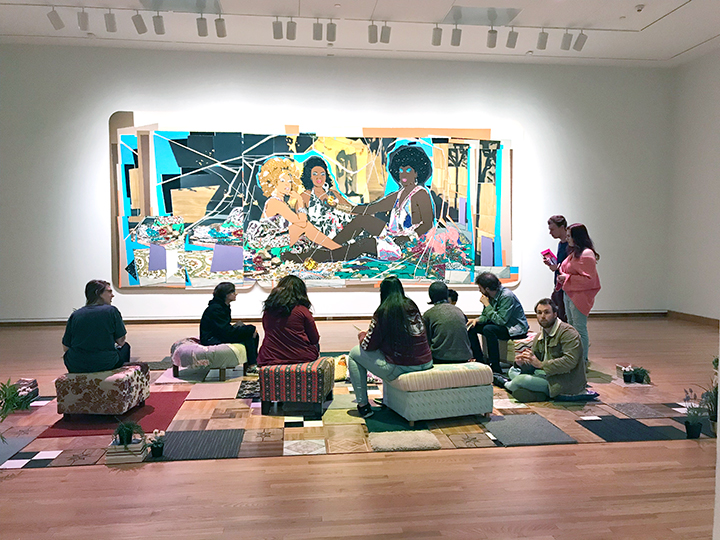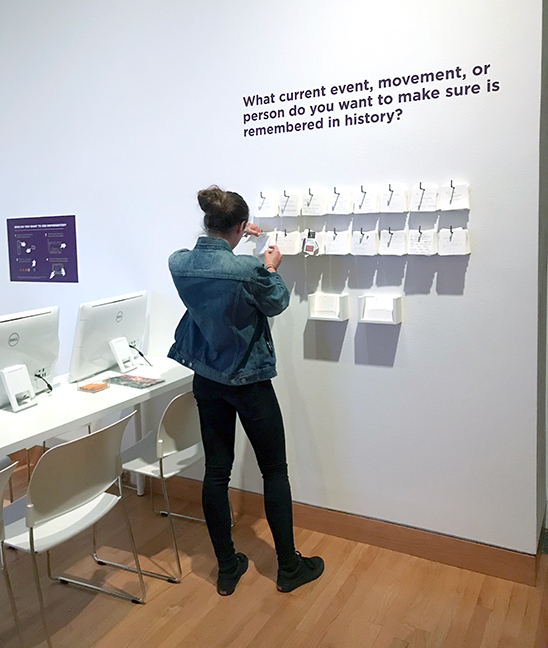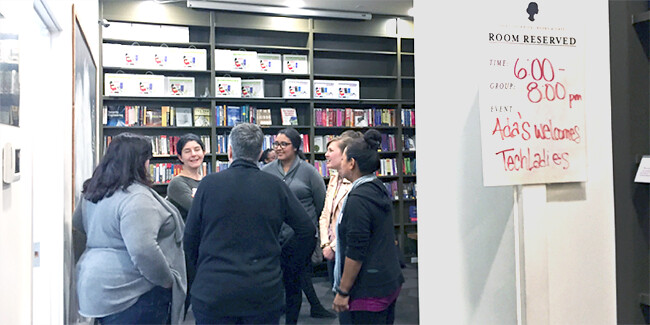Inspiration for interactive design comes from many different places. Whether it’s award-winning websites and online experiences or stepping away from the screen and observing art and design from our everyday lives, we are surrounded by constant user interaction and we find stunning experiences all around us.
It seems fitting that I write about my recent visit to the Seattle Art Museum (SAM) to view the Figuring History exhibit. The power and importance of this exhibit, combined with the scenography (which included a lot of public interaction within the museum) is a great example of art fueling my own creative juices that guide me in my work.
The exhibit brings together 3 African American artists: Robert Colescott, Kerry James Marshall, and Mickalene Thomas, three artists who re-examine the role of people of color in Western Art.
Robert Colescott, who passed away in 2009 at the age of 84, engaged in themes of race, gender and social inequality in his vibrant, poignant paintings. His reinterpretation of famous paintings through Art History (such as Jan Van Eyck’s Arnolfini Portrait or Picasso’s Les Demoiselles d’Avignon) brings people of color to the forefront, substituting the original paintings’ European white characters with black characters.
Kerry James Marshall’s artwork focuses on issues of black identity, experience and representation in Western art. His monumental paintings are filled with scenes from everyday life, historical events and political references. His paintings show what it means to be black in America.
 “School of Beauty, School of Culture” (2012) by Kerry James Marshall. © Kerry James Marshall
“School of Beauty, School of Culture” (2012) by Kerry James Marshall. © Kerry James Marshall
Mickalene Thomas’ glittery, textured, rich paintings celebrate black female identity, celebrity and sexuality. Her style is inspired by the 1970s and her art focuses on the black woman’s representation in both Art History and contemporary culture.
 “Le déjeuner sur l’herbe: Les Trois Femmes Noires” (2009) by Mickalene Thomas.
“Le déjeuner sur l’herbe: Les Trois Femmes Noires” (2009) by Mickalene Thomas.
On top of being blown away by the exhibit itself, I also loved the exhibit’s scenography. The wonderful use of space, objects and interactive elements allows the visitor to truly plunge into the exhibit experience.
 A visitor adding her thoughts to the exhibit.
A visitor adding her thoughts to the exhibit.
Here are just a few takeaways from the exhibition relating back to my work as an interactive designer:
-
Make it mean something — users don’t have a lot of time and attention span is short. Capture a user’s attention whether it’s through the medium you choose (like Mickalene Thomas’ use of sparkly rhinestones, enamel and bright colors) or the subject matter or through great aesthetics.
-
Make it visually powerful and compelling: make users feel something when interacting with your design.
-
Keep in mind the context in which you are showing information and how you engage the user/viewer.
-
The importance of user/viewer engagement to keep user/viewer interested and immersed in the experience.
-
The artistic principles are the same for interactive design, in that it guides the user and connects them with the experience.
The exhibit ends May 13th.




